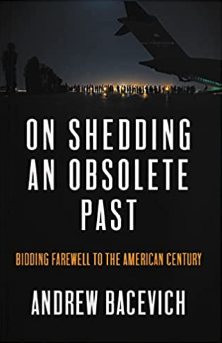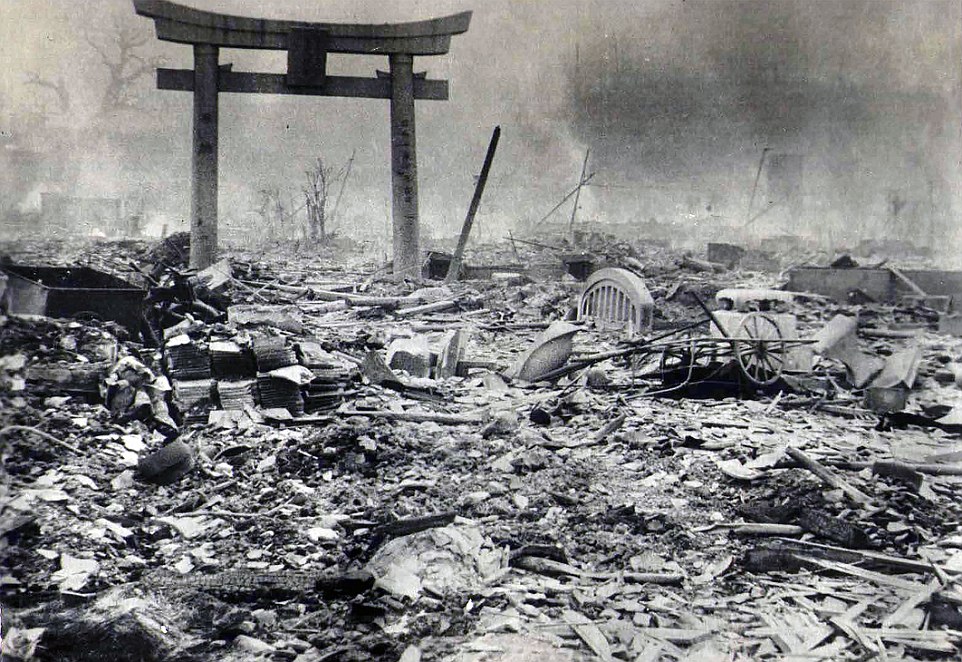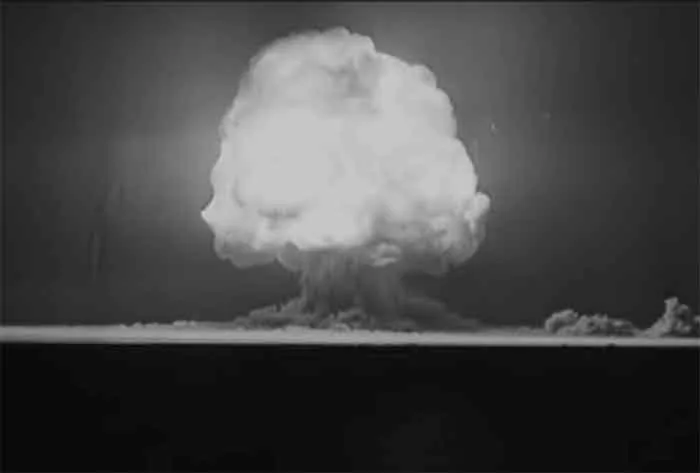
Bosley Crowther, chief film critic for the New York Times, didn’t quite know what to make of Dr. Strangelove at the time of its release in January 1964. Stanley Kubrick’s dark antiwar satire was “beyond any question the most shattering sick joke I’ve ever come across,” he wrote. But if the film had its hilarious moments, Crowther found its overall effect distinctly unnerving. What exactly was Kubrick’s point? “When virtually everybody turns up stupid or insane — or, what is worse, psychopathic — I want to know what this picture proves.”
We may find it odd for an influential critic to expect a movie to “prove” anything. Kubrick’s aim was manifestly not to prove, but to subvert and discomfit.
With feature-length hyperbole — not a wisp of subtlety allowed — Dr. Strangelove made the case that a deep strain of madness had infected the entire U.S. national security apparatus. From the “War Room” that was the Pentagon’s holiest of holies all the way to the cockpit of a B-52 hurtling toward its assigned Russian target with a massive nuclear bomb in its belly, whack jobs were in charge.
A mere two years after the Cuban missile crisis, few Americans viewed the prospect of nuclear Armageddon as a joking matter. Yet here was Dr. Strangelove treating this deadly serious topic as suitable for raucous (and slightly raunchy) comedy. That’s what bothered Crowther, who admitted to being “troubled by the feeling, which runs through the film, of discredit and even contempt for our whole defense establishment, up to and even including the hypothetical Commander-in-Chief.”
If the nation owed its very survival to that defense establishment — a widely accepted supposition during the Cold War — Kubrick’s contemptuous attitude was nothing short of blasphemous.
We may imagine other inhabitants of the circle in which Crowther lived and worked sharing his unease. Collectively, they comprised a world of believers — not a faith community in a religious sense but an elite establishment. Members of that establishment accepted as gospel an identifiable set of political, cultural, and moral propositions that defined mid-twentieth-century American life.
Chief among them was a conviction that communism — monolithic, aggressive, and armed to the teeth — posed an existential threat to what was then known as the Free World. In the face of that, it had become incumbent upon the United States to arm itself to the teeth. The preeminent symbol of U.S. readiness to thwart that Red threat was a massive nuclear strike force held on hair-trigger alert to obliterate the entire Soviet empire. (A typical 1961 report from the Joint Chiefs of Staff suggested that a full-scale U.S. nuclear attack on the Soviet Union would kill half its population, or 108 million people. An analysis the Joint Chiefs provided to the Kennedy White House that same year put the dead for Russia and China together at upwards of 600 million.)
Instant readiness to wage World War III thereby held the key to averting World War III. Politicians, generals, and PhD-wielding “defense intellectuals” all affirmed the impeccable logic of such an arrangement. As the menacing motto of the Strategic Air Command, which controlled America’s nuclear bombers and missiles, put it: “Peace Is Our Profession.”
Kubrick was not alone in expressing concern that such a saber-rattling pursuit of peace might yield an altogether different outcome. Could policies supposedly designed to prevent a nuclear holocaust actually produce it?
Arbiters of American culture like Crowther might have bridled at such a thought but proved unable to prevent it from gaining purchase. For authors of pulp fiction thrillers and Hollywood studio executives, the anxieties induced by the possibility of nuclear war were pure catnip. In 1964 alone, in addition to Dr. Strangelove, major movie releases included Fail Safe (Moscow and New York City are vaporized) and Seven Days in May (a military plot to overthrow a dovish U.S. president is barely averted). The near-miss of the Cuban missile crisis endowed such fictional plots with an eerie element of verisimilitude. So, too, did the USSR’s atmospheric detonation of a 50-megaton nuclear weapon in October 1961. That “Tsar Bomba” was over 1,500 times more powerful than both of the obliterating atomic bombs dropped on the Japanese cities of Hiroshima and Nagasaki in August 1945 to end World War II.
As long as the Cold War continued, popular worries about a single spasm of violence extinguishing humankind persisted, with national leaders obliged to offer at least gestures of sympathetic concern. Thus was born the project that came to be known as “nuclear disarmament,” which dated from President John F. Kennedy’s justifiably famous June 1963 speech at American University. Here was his inaugural “pay any price, bear any burden” speech of 1961 turned inside out and upside down. As if anticipating the cultural mood of our own day, the commander-in-chief vowed to “help make the world safe for diversity.” What followed was JFK at his most eloquent:
“For, in the final analysis, our most basic common link is that we all inhabit this small planet. We all breathe the same air. We all cherish our children’s future. And we are all mortal.”
From that moment on, Washington’s enthusiasm for ever larger nuclear arsenals containing ever more powerful weapons began to ebb. So, too, did public deference to the proponents of “overkill.” Crucially, however, the U.S. military’s ability to incinerate millions at a moment’s notice remained intact — as it does to this day, with a “modernization” of the American arsenal at a cost of a couple of trillion dollars now well underway.
In a sense, the “disarmament” movement of those years compares to the collective American response to the climate crisis of our own day. Sometimes the most expeditious approach to preserving the status quo, after all, is to make a pretense of embracing change. Think of Frank Sinatra partnering with Elvis Presley in a duet of “Love Me Tender.” Even without Irving Berlin and the Gershwins, Old Blue Eyes kept on selling records well into the era of rock-and-roll.
Putin Spoils the Party
Then came the collapse of communism.
As if at a stroke, worries about World War III dissipated. American schoolchildren soon forgot all about mandatory duck-and-cover drills. Dr. Strangelove became a curiosity from another era like The Maltese Falcon or Gone with the Wind. And while the Bulletin of the Atomic Scientists continued to update its creepy “Doomsday Clock,” the public ceased to pay much attention.
Considered in retrospect, Bosley Crowther had seemingly gotten the better of Stanley Kubrick in their little tiff. After all, a quarter-century after Dr. Strangelove appeared, the Cold War ended peacefully without a hint of World War III. Yes, a nuclear holocaust remained hypothetically possible, but it was no longer something worth fretting about.
Yet as nuclear nightmares faded, blissful dreams of peace did not take their place. Indeed, the ensuing post-Cold-War era, extending from the fall of the Berlin Wall in 1989 to the Russian invasion of Ukraine in 2022, found the United States perpetually at war or verging on war. During that period, however, few paid serious attention to the possibility that any of our conflicts might involve the use of nuclear weapons.
Nukes did retain occasional utility as a rationale for war. Consider, for instance, the decision of President George W. Bush and crew to invade Iraq in 2003, supposedly to eliminate Saddam Hussein’s (non-existent) nuclear arsenal. Still, among the subjects that riled up American politicians, newspaper columnists, and late-night TV hosts, nuclear worries seldom made the cut. Even as the Pentagon embarked on that multi-trillion-dollar program of nuclear (re)armament — marketed as needed safety upgrades — few seemed to notice. For Americans, culture wars, real and ongoing, took precedence over the theoretical prospect of replaying Hiroshima on a grander scale.
One might have thought that Russia’s attack on Ukraine and the protracted conflict that followed would have revived the nuclear nightmares of an earlier era. After all, Vladimir Putin has shown no reticence when it comes to sowing death and destruction (nor to implicitly threatening the use of “tactical” nuclear weapons). His determination to achieve Russia’s political objectives regardless of cost seems readily apparent.
Furthermore, U.S. officials and major media outlets have concurred in classifying the Russian president as uniquely dangerous. For example, a recent front-page news article in the New York Times — not an editorial or opinion piece — described Putin as beset by “grievances, paranoia and [an] imperialist mind-set” (that is, as an embittered nutcase).
Putin’s ostensible paranoia in combination with Russia’s gigantic nuclear arsenal would seem to justify a hair-on-fire response from Washington national security officials. Certainly, the danger of nuclear weapons use today greatly exceeds that of 20 years ago when the Bush administration argued that the Iraqi nuclear threat justified a Ukraine-style invasion.
The Biden administration’s insouciance regarding Russian nukes therefore qualifies as, at the very least, odd. According to my colleague at the Quincy Institute for Responsible Statecraft Anatol Lieven, “The greatest threat of nuclear catastrophe that humanity has ever faced is now centered on the Crimean peninsula.” His understanding of all things Russian greatly exceeds my own, but that assessment strikes me as about right. And while Planet Earth dangles on the edge of an abyss, the U.S. response is to debate whether or not to supply Ukraine with F-16s.
As far as I can tell, Biden administration policy regarding that embattled land rests on one crucial assumption: in the face of an open-ended, incremental U.S. escalation, the Kremlin will ultimately submit. In turn, Ukraine’s inevitable victory will endow Europe with peace and security until the end of time.
How that assumption meshes with the conviction that Putin is mentally unbalanced isn’t clear. Counting on an irrational actor to behave rationally is an inherently risky proposition.
Who’s in Charge Here?
Ukraine has become the locus of a conflict that, willy-nilly, pits Russia against the West — which means against the United States. How far can Washington push Putin before he tries to retaliate in some fashion against his primary adversary? Does President Biden even recognize the urgency of that question? If he does, he’s chosen not to share his concerns with the American people.
Granted, Biden has made clear his determination to prevent any direct American involvement in combat with Russia. The president likely calculates that the willingness of Americans to support Ukraine with billions of dollars in weapons and munitions stems in part from the fact that no U.S. troops are fighting and dying.
But there may well be another assumption that underlies popular support for U.S. involvement in Ukraine — namely, that the people in charge, beginning with the man in the White House, know what’s actually going on. Dr. Strangelove confronted that assumption head-on 69 years ago and rejected it utterly, depicting the people then in charge as somewhere between clueless and just plain dangerous.
Not for a moment would I liken Mr. Biden to that movie’s President Merkin Muffley, current chairman of the Joint Chiefs of Staff Mark Milley to Buck Turgidson, or any senior officer on active duty to Brigadier General Jack D. Ripper, the crazed commander of that film’s Burpelson Air Force Base. (Although I do wonder why the four-star Air Force General who recently told his troops to get ready for war with China in two years wasn’t immediately canned.)
Here’s the problem, at least as I see it: however smart and well intentioned, the people in charge in Washington today don’t know everything they think they know — and everything they need to know either. Detailed studies of the Cuban missile crisis have revealed that Kennedy and his men were acting on information that was all too often inadequate or simply wrong. They thought themselves in a position to control events when they weren’t. To a considerable extent, the U.S. and the Soviet Union avoided war in October 1962 through sheer dumb luck — and the selective disobedience of certain U.S. and Soviet junior officers who knew a stupid order when they heard one.
Of course, that was way back in the 1960s, ancient history as far as most Americans are concerned. Today, thanks to the wonders of advanced technology, U.S. intelligence and decision-making are much improved, right? Alas, recent screwups, including the disastrous termination of the Afghan War, don’t treat that claim kindly.
A proxy war pitting the United States against a paranoid adversary with a massive nuclear arsenal at his command: What could possibly go wrong? Kubrick’s timeless masterpiece invites us to reflect on that question — and the sooner we do, the better.














































